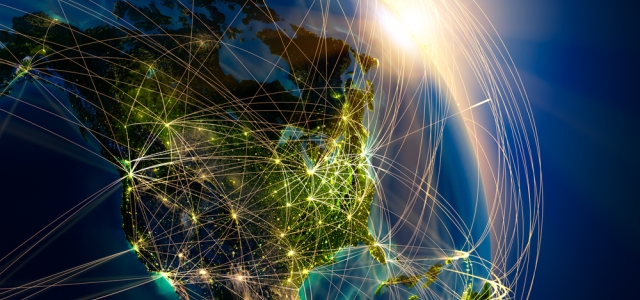 Across the United States, innovative industries in the science, technology, engineering, and mathematics (STEM) fields have driven economic growth and job creation nationally and in metropolitan areas throughout the country. And the human capital—the people who are leading these innovations—comes not only from homegrown talent but also from a global labor market and talent pool. The U.S. has a well-established innovation economy, similar to other developed nations. But certain challenges exist for countries to attract talent to fuel these industries. A new report from the Migration Policy Institute (MPI) describes the policy challenges related to attracting individuals from the global talent pool. The authors recognize human capital as “the one resource that can propel firms and economies to the top tier of competitiveness.” There have been undeniable increases in the supply and demand for skilled workers worldwide as more places continue to transition to knowledge-based economies with rising occupational skill requirements. As such, in addition to advances in OECD countries, the report notes that as developing countries continue to grow, and as their immigration policies “become less bureaucratic and cumbersome, a much greater choice of destinations will open up for the internationally mobile.”
Across the United States, innovative industries in the science, technology, engineering, and mathematics (STEM) fields have driven economic growth and job creation nationally and in metropolitan areas throughout the country. And the human capital—the people who are leading these innovations—comes not only from homegrown talent but also from a global labor market and talent pool. The U.S. has a well-established innovation economy, similar to other developed nations. But certain challenges exist for countries to attract talent to fuel these industries. A new report from the Migration Policy Institute (MPI) describes the policy challenges related to attracting individuals from the global talent pool. The authors recognize human capital as “the one resource that can propel firms and economies to the top tier of competitiveness.” There have been undeniable increases in the supply and demand for skilled workers worldwide as more places continue to transition to knowledge-based economies with rising occupational skill requirements. As such, in addition to advances in OECD countries, the report notes that as developing countries continue to grow, and as their immigration policies “become less bureaucratic and cumbersome, a much greater choice of destinations will open up for the internationally mobile.”
What does this mean for a country such as the United States with a well-established innovation economy as other nations are becoming more welcoming? Particular immigration policy challenges–related to growing competition among the choice of destination for talented individuals in the global labor market, as well as shaping an attractive, welcoming and inclusive environment–emerge for the U.S. to continue to attract and retain talent from the globally mobile skilled labor force. The MPI report specifically notes two interwoven challenges and opportunities that governments face in this regard: attracting immigrants and expanding the pool of skilled immigrants from which to draw; and designing immigration and integration policies that identify individuals with the best chance for success and that encourage them to remain.
The report identifies and describes the various factors and policies that countries should consider when designing strategies for immigrants across the skills spectrum and concludes with three observations. First, “governments seeking to attract, select, and retain skilled immigrants can rely on a broad range of policies, which must be brought together into a coherent strategy that considers how different measures complement each other.”
Second, “the role of employers in both attracting and selecting immigrants is crucial. Immigration policy is not a two-way relationship between governments and immigrants, but a three-way interaction in which employers are front and center.” Governments rely on employers and businesses to create the opportunities for skilled immigrants and identify the skills that are most needed and relevant. Immigration policies must therefore be agile, predictable and transparent.
Third, “attracting skilled immigrants is not just the domain of immigration and visa policy, but also depends on the success of policy efforts in other fields.” These include the extent to which a place provides a welcoming environment for immigrants and their families, and a country’s progress towards domestic education and training policies for growing a skilled workforce. Immigration must, therefore, be part of a much broader social- and economic-policy strategy that includes education, training, employment, research, investment, and other areas.
Our current immigration system, which Congress has not substantially overhauled in more than two decades, stops America’s innovation economy from adequately attracting and retaining skilled individuals from the global pool of talent. While high-tech and other innovative STEM industries have progressed by leaps and bounds over the last two decades, our immigration system has remained stagnant. The static nature of our byzantine system is akin to if the innovation industry had continued to work only with technology that had not advanced beyond what was available in the 20th century, rather than dynamically changing and adapting to a 21st century environment.
Global competition is only becoming fiercer as other countries seek out and implement ways to effectively attract, welcome, and retain high-skilled talent. If we squander this opportunity to bring our immigration system up to date in a way that benefits everyone – workers, families, employers, and citizens – we are jeopardizing a competitive advantage that has been crucial to establishing America as a world leader.
FILED UNDER: Entrepreneurship, Immigrants and Innovation, Immigration and Talent


